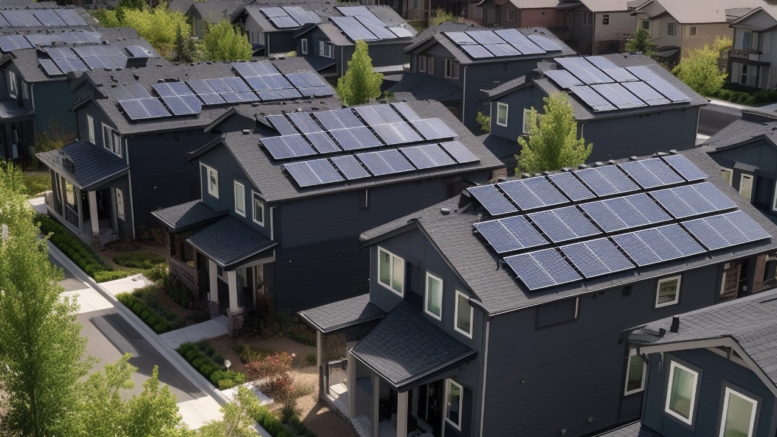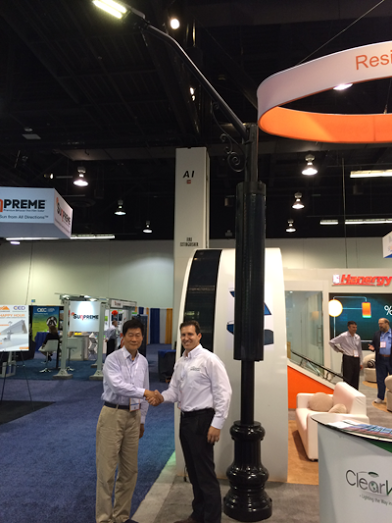One of the most frequently cited benefits for the installation of rooftop solar panels, aside from the environmental benefits, is the reduction in electrical bills. These cost savings are generated not only by reducing energy usage, but also by sending unused excess electricity generated by the solar panels back to the grid. The fee arrangement that allows a homeowner to capture the latter form of cost savings is commonly called “net metering.”
Net metering is a fee arrangement in which a homeowner whose house has solar panels and is also connected to the electrical grid can send excess electricity back to the grid and offset it against the power they have pulled from the grid. This calculation is based off of the net amount of kilowatt hours (KWH) consumed. So, if a household uses 100 KWH of energy from the grid in a given month, but sends 95 KWH back to the grid, the homeowner will be billed for 5 KWH for that month. If the homeowner sends back more energy than they pull, they will not receive payment for the energy sent back to the grid, but rather will carry the excess forward as a credit against next month’s bill.
According to the U.S. Department of Energy, 38 states had mandatory net metering rules in 2017, as well as all federal territories. Now, less than 30 states have mandatory net metering. States are transitioning away from net metering for a variety of reasons. Some states are influenced by the power companies to shift to a fee structure more in their favor. When the power company nets total usage in this way, the obvious result is that they end up with reduced fees coming in. Some have also argued that this causes homeowners without solar panels to effectively subsidize the solar panel-owning homeowners. In other states, environmental concerns and reducing reliance on the electrical grid are the predominant concerns, leading them to implement alternative fee structures that incentivize the installation of solar panels. Meanwhile, other states are seeking to incentivize the installation of solar batteries.
Some power companies have succeeded in shifting state policy to terms more favorable to them. In North and South Carolina, power companies successfully lobbied for an updated fee structure commonly called “net metering successor tariffs.” Under this fee structure, homeowners with solar panels will be subject to a minimum monthly bill. Solar panel owners will also be required to opt into “time-of-use” pricing, meaning that their electrical rate will be variable based on demand, as opposed to the flat rates that were in place before this shift. The homeowner with solar panels is also credited for the energy they send back to the grid at the prevailing rate existing at the time it is sent back. Peak energy usage occurs in the evenings and mornings, when solar power generation is lower, and one of the low-points in energy usage occurs in the middle of the day, when solar power generation is at its highest. This means that the homeowner with solar panels is paying peak rates for the energy they do use from the grid and is being credited for their solar generation at the lowest rates. The average estimated monthly savings for solar panel-owning households will fall from $80-$98 to $40-$68. However, existing net-metering customers will be allowed to stay on the current flat rates until 2027.
Other Fee Structures
In contrast to the shifts in the Carolinas, many other states have shifted away from net metering to alternative fees structures that are more favorable to solar panel owners. Connecticut is one such state. There, they implemented two new fee structures, one structured for solar farms and one for homeowners. For homeowners, Connecticut implemented the “netting tariff” fee structure. Under this arrangement, the homeowner generating more energy than they consume can carry forward a credit for the excess indefinitely, whereas previously the credit would be zeroed out every March and paid out at the prevailing wholesale rate. Therefore, a homeowner is realizing the full value of the energy generated by their solar panels, not being paid for the net excess at wholesale rates. Additionally, Connecticut offers increased rates for households whose incomes are less than 60% of the state median income and also for those who live in state-identified “distressed municipalities,” meaning that these demographics receive a larger credit for energy sent back to the grid than non-qualifying customers. Customers qualifying under both qualifications receive both rate increases.
Some other states have moved to structures with underlying policy incentives other than just the generation of solar power. This year, California is implementing “Net Energy Metering” (NEM) 3.0, which builds off their previous shift from net metering. In 2016, California implemented NEM 2.0, which required solar panel-owning customers to switch to time-of-use rates, pay interconnection fees, and minimum monthly charges. This caused an initial drop in solar panel installations, but installations then started to climb and reach record-breaking numbers in 2022. The biggest change from NEM 2.0 in NEM 3.0 is the implementation of reduced rates for net metering credits through “net billing.” Under this new fee structure, rates are based on the money saved by the power company by not producing the energy itself. This results in roughly a 75% decrease in the credit received for excess energy a solar-panel owning customer sent back to the grid. NEM 3.0 also shifts the structure of the time-of-use fees, implementing higher rates at peak hours and lower rates during off-peak hours.
While this initially sounds like it should be adverse to homeowners with solar panels, there is an underlying policy here to incentivize the installation of solar batteries. While the metering changes will almost triple the payback period on a solar panel installation without batteries, the installation of an accompanying battery system, or retrofit to an existing solar panel system, will shorten this extended payback period by allowing the household to reduce usage during peak hours.
Changing Regulations
As the shift away from net metering continues, it will be important solar panel installers to pay attention to the shifting regulations. Some states are shifting to fee structures that incentivize solar panel installation even more than simple net metering, while others are shifting to structures that are more favorable to the power company. Yet other states are seeking to incentivize the installation of solar batteries. These changes will have an impact on affordability and payback periods for solar panels, which will in turn affect demand.
In this evolving regulatory landscape, installers should consider the following:
• Has my state recently shifted from net metering, or does it plan to?
• How will the incentive structure affect demand for solar panels?
• Is the state trying to incentivize the installation of solar batteries? If so, how should this affect my business operations?
Installers should educate themselves on their state’s laws and regulations affecting solar power generation and metering and be prepared to discuss existing regulations and potential changes in policy with customers. If there’s any question about a state’s laws and regulations regarding solar panels and energy metering thereof, consult an attorney.
Author’s Note: This article is intended for informational purposes only and should not be construed as legal advice.
About the Authors: Lindsey Powell is an attorney with Anderson Jones, PLLC, a construction law firm located in Raleigh, North Carolina, with attorneys licensed in North Carolina and Georgia. They assist clients throughout the litigation process, from pre-filing advice to mediation and arbitration, settlement negotiations, and trial. Author credit is also given to Jack Ayers, Summer Law Clerk at Anderson Jones, PLLC. For more information or questions about this article, please email [email protected].





Be the first to comment on "Tracking The Shift Away From Net Metering for Homeowners With Solar Panels"